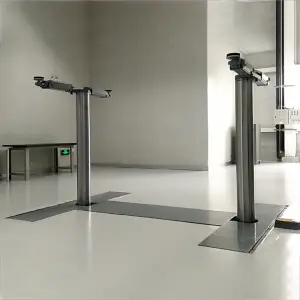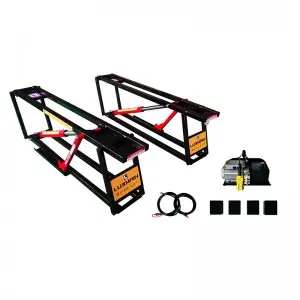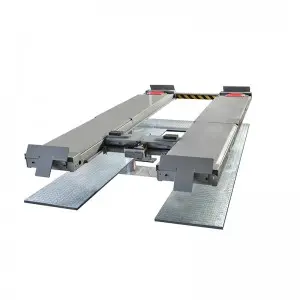In the world of automotive care, the ability to conduct maintenance and repairs efficiently is crucial for both professional mechanics and car enthusiasts alike. One innovative solution that has been gaining popularity among vehicle service providers is the inground lift. This intriguing piece of equipment not only saves space but also provides unparalleled convenience when working on various types of vehicles. In this article, we will explore the benefits of inground lifts, how to choose the right one for your needs, and tips for installation and maintenance.
What is an Inground Lift?
An inground lift is a type of hydraulic lift designed to be installed beneath the ground level, allowing vehicles to be raised up for easy access during repair and maintenance tasks. Unlike traditional above-ground lifts that occupy valuable floor space, inground lifts remain flush with the garage floor when not in use. This innovative design makes it an ideal solution for facilities with limited space or for those who prefer a sleek, unobtrusive appearance.
Benefits of Using an Inground Lift
Space Saving Design
One of the most appealing features of an inground lift is its space-saving capability. By being installed below ground, these lifts do not affect the overall layout of your garage or workshop. This can be particularly advantageous for smaller workshops or home garages, where floor space is at a premium.
Increased Accessibility
Inground lifts provide easy access to the undercarriage of a vehicle, making it more convenient for mechanics to perform inspections, oil changes, brake work, and exhaust system repairs. The ability to walk around the vehicle without obstacles presents a safer working environment and improves overall efficiency during service.
Enhanced Stability
Due to their design, inground lifts typically offer better stability compared to their above-ground counterparts. With the lift securely anchored beneath the floor, users can feel more confident working under the vehicle, reducing the risk associated with working at heights and making the overall experience safer.

Enhancing Your Garage Experience: The Ultimate Guide to Choosing and Installing an Inground Lift for Vehicle Maintenance
Long-term Investment
While the initial cost of purchasing and installing an inground lift may be higher than other types, this investment can prove to be beneficial in the long run. The durability and functionality of most inground lifts ensure they can withstand extensive use, making them a reliable choice for commercial garages or serious hobbyists.
Choosing the Right Inground Lift

Enhancing Your Garage Experience: The Ultimate Guide to Choosing and Installing an Inground Lift for Vehicle Maintenance
When looking for the perfect inground lift for your needs, several factors should be considered:
Weight Capacity
Different inground lifts have varying weight capacities, so it is essential to choose one that can accommodate the types of vehicles you plan to work on. Most inground lifts can lift between 7,000 to 20,000 pounds, so assess your vehicle types and select accordingly.
Lifting Height
Consider the maximum lifting height of the inground lift. While most lifts allow for ample clearance for typical passenger vehicles, larger vehicles such as trucks and SUVs may require a lift with a higher range.
Type of Lift
Inground lifts come in several different configurations, including two-post, four-post, and scissor lifts. The choice will depend on your specific needs, including the level of access required and the floor space available.
Installation Requirements
Installation of an inground lift can be a considerable undertaking, as it involves excavation and potentially plumbing work. Be sure to check local building codes and regulations, and consider consulting with a professional for the installation to ensure safety and compliance.

Enhancing Your Garage Experience: The Ultimate Guide to Choosing and Installing an Inground Lift for Vehicle Maintenance
Maintenance Tips for Your Inground Lift
To keep your inground lift functioning optimally, regular maintenance is crucial. Here are some tips to maintain its performance:
1. **Regular Inspections**: Have routine inspections to check for leaks and wear, ensuring all components function correctly.
2. **Lubrication**: Ensure that moving parts are adequately lubricated to prevent wear and tear.
3. **Clean the Area**: Keep the surroundings clean by removing debris and oil spills that could pose hazards.
4. **Emergency Procedures**: Familiarize yourself with the lift’s emergency release procedures and ensure all users are trained in case of operational issues.
Conclusion
Investing in an inground lift is a decision that can greatly enhance your vehicle maintenance experience, providing unmatched convenience and functionality. By understanding the benefits and considerations involved in choosing and maintaining an inground lift, you can make a more informed decision that suits your needs. Whether you’re a professional mechanic or a passionate car enthusiast, an inground lift can elevate your experience in automotive care.ac series



